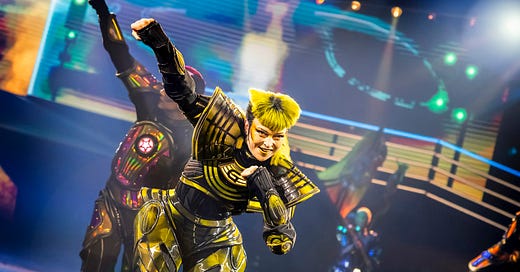Queering the West End
From Starlight Express to Shakespeare, directors are dragging queer subtext out into the open. But is it all just a fleeting trend?
By Alice Saville
It’s LGBTQ+ History Month, which means that logically you might expect an article talking about the rare beast that is queer theatre and where it might be found (Soho, Southwark Playhouse, Pleasance), its themes (subversive, political, sexy), its remuneration (poor), and its future (sparkling bright). And next year I may well return to writing that article, in some form, as is my time-honoured February tradition.
But this year, things are different. I’m seeing queer themes seep into surprising places, making un-signposted interventions into massive shows. Like Elphaba, “I have been changed” – not through a homoerotic friendship with a delusional blonde, but through an encounter with some incredibly horny trains.
I went to Starlight Express as a lark, with friends, expecting a neon-hued 80s or 90s throwback to an era where rollerskating was the acme of cool, and painting geometric shapes on your face was a legitimate style choice rather than a precursor to cosmetic surgery. Instead, I was introduced to a multifaceted queer wonderland populated by promiscuous locomotives who swapped lovers and steamed through routines inspired by Berlin clubs. Thomas could never.
Afterwards, I needed to process what had happened to me, so I did some reading. Surely this is not the Starlight Express as premiered in 1984, the era of pearl-shredding censor Mary Whitehouse and Maggie Thatcher, who seized on Lloyd Webber as the exemplar of what morally improving theatre should look like?
Keep reading with a 7-day free trial
Subscribe to Exeunt to keep reading this post and get 7 days of free access to the full post archives.






